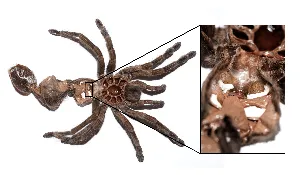What is Tarantula Molting
Molting is a fundamental biological process for tarantulas, essential for their growth and survival. Unlike mammals, tarantulas have an exoskeleton, a hard outer shell made of chitin, that doesn’t grow. As a tarantula matures, it needs to shed this restrictive shell to accommodate its growing body. This process, called molting, allows the tarantula to increase in size and replace damaged or worn-out body parts. It’s a vulnerable time for these fascinating creatures, making it crucial for owners to understand the signs and provide the right care. The frequency of molting decreases as the tarantula ages, with juveniles molting more often than adults.
Why Tarantulas Molt
Molting serves multiple crucial purposes for tarantulas. Primarily, it allows the tarantula to grow. The exoskeleton doesn’t expand, so the tarantula must shed it to get bigger. Secondly, molting is a way for tarantulas to regenerate lost limbs or damaged body parts. During the molt, the tarantula can regrow legs, pedipalps, and other appendages. Additionally, molting removes parasites and debris that have accumulated on the exoskeleton. This helps maintain the tarantula’s health and hygiene. Molting is, therefore, a vital aspect of a tarantula’s life cycle, ensuring its growth, repair, and overall well-being.
The 5 Key Signs of a Molting Tarantula
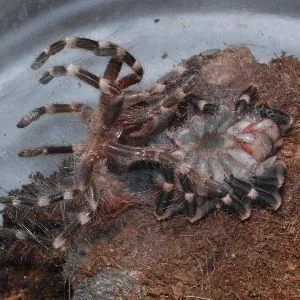
Recognizing the signs of an impending molt is critical for tarantula owners. Identifying these signs allows you to provide the appropriate environment, minimizing stress and ensuring the tarantula’s safety during this vulnerable period. Paying close attention to your tarantula’s behavior and appearance will help you prepare for the molting process. Here are the five key signs to watch for, helping you provide the best possible care for your tarantula.
Lethargy and Loss of Appetite
One of the earliest signs that a tarantula is preparing to molt is lethargy and a loss of appetite. The tarantula will become less active than usual, spending more time hiding or resting in its burrow. It may refuse food, even if it’s a favorite treat. This behavior is due to the energy-intensive process of molting, which requires the tarantula to conserve its resources. If your tarantula stops eating and becomes unusually still, it is very likely preparing to molt. It’s crucial not to force-feed the tarantula during this time, as it can cause undue stress. The image here illustrates the tarantula’s inactivity, which is an important sign. (Image: lethargic-tarantula.webp)
Darkening of the Abdomen
As the tarantula approaches its molt, the abdomen often darkens. This darkening is caused by the new exoskeleton forming beneath the old one. You might observe a change in the color of the abdomen, making it appear duller or a different shade than usual. This is a clear visual indication that the molting process is underway. Careful observation of the tarantula’s abdomen can help you predict when the molt will occur. (Image: darkening-abdomen.webp)
Changes in Coloration
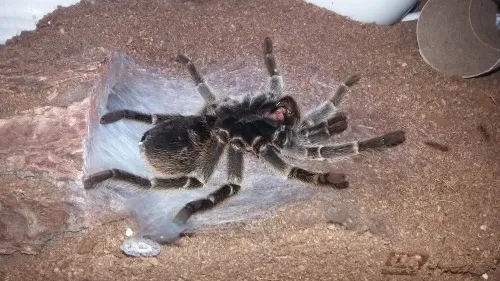
Apart from the abdomen, the overall coloration of the tarantula might change. The vibrant colors can fade, and the tarantula may appear dull. Some tarantulas exhibit subtle changes in the pattern or hue of their bodies. These color changes are another indication that the tarantula is getting ready to shed its exoskeleton. Pay attention to these shifts, as they are essential clues to the impending molt. Healthy tarantulas often display vibrant colors. (Image: healthy-tarantula.webp)
Formation of a Molting Mat
Many tarantulas will create a molting mat, a silken web or platform that they use to facilitate the molting process. This mat provides a stable surface for the tarantula to lie on while it sheds its exoskeleton. The molting mat can be found in the burrow or at a chosen spot in the enclosure. The presence of this mat is a very strong indicator that the tarantula is preparing to molt. (Image: molting-mat.webp)
Increased Silk Production
Before molting, tarantulas often increase silk production. They may use silk to reinforce their burrows, create a molting mat, or simply to make the environment more secure. If you notice an unusual amount of silk in your tarantula’s enclosure, especially combined with other signs, it’s likely that a molt is approaching. This extra silk is a sign that the tarantula is preparing for the vulnerable molting period, aiming to protect itself. (Image: tarantula-molting-process.webp)
What to Do When You Spot Molting Signs

Once you recognize the signs of molting, it’s important to create a safe and stress-free environment for your tarantula. There are several steps you can take to ensure the tarantula’s well-being during this sensitive time. Proper care and attention can significantly increase the chances of a successful molt. Following these guidelines can help minimize the risk of complications and contribute to your tarantula’s health.
Provide a Safe and Quiet Environment
The most critical step is to provide a safe and quiet environment. Move the enclosure to a location away from high traffic, loud noises, and direct sunlight. This will help reduce stress. Ensure the enclosure is secure, so the tarantula feels protected. Avoid any sudden movements or disturbances near the enclosure. A calm environment allows the tarantula to focus on the molting process. This is a good time to check the enclosure’s security.
Maintain Proper Humidity Levels
Maintaining the correct humidity levels is essential during molting. Use a hygrometer to monitor the humidity and make sure it is appropriate for the tarantula’s species. If the humidity is too low, the exoskeleton may dry out, making molting difficult. If needed, mist the enclosure lightly to increase humidity, but avoid excessive moisture that could lead to mold. Providing the correct humidity is an important part of molting.
Avoid Disturbing the Tarantula
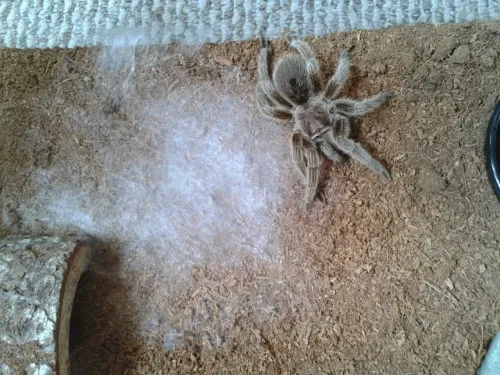
The most important thing is to leave the tarantula alone. Avoid opening the enclosure unnecessarily, changing water, or attempting to handle the tarantula. Any disturbance can stress the tarantula and potentially interfere with the molting process. Let the tarantula take its time and avoid any actions that could disturb the molting process. Patience is critical. You can observe the tarantula from a distance, but don’t interfere.
What Not to Do When a Tarantula is Molting
There are several actions to avoid during the molting process, as they can harm the tarantula. Do not try to assist the tarantula in molting. Interference can cause injury or even death. Avoid feeding the tarantula until after it has molted and its fangs have hardened. Do not handle the tarantula during this period, as its new exoskeleton is very soft and vulnerable. The new exoskeleton takes a few days to harden fully. Never disturb the tarantula, or attempt to remove the old exoskeleton.
How Long Does Molting Take and Aftermath
The molting process can take from a few minutes to several hours, depending on the size and age of the tarantula. After molting, the tarantula will be soft and vulnerable, and its fangs will take a few days to harden. During this period, it’s important to continue providing a quiet and safe environment. Do not handle the tarantula until its exoskeleton has fully hardened. The tarantula may appear pale and delicate right after molting. (Image: freshly-molted-tarantula.webp)
Feeding After Molting
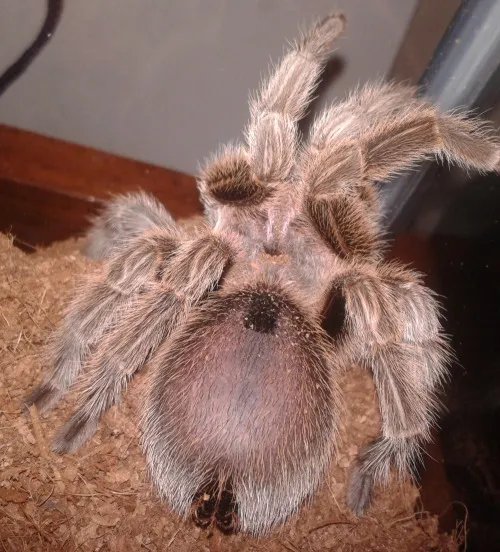
Once the tarantula’s fangs have hardened, you can resume feeding. Offer a small, appropriately sized meal. The tarantula may be very hungry after the process. It is best to start with a small meal and monitor the tarantula’s behavior. Do not overfeed the tarantula immediately after molting. Observe the tarantula’s behavior to determine if it is ready to eat. A good practice is to wait a week after the molt before offering food. (Image: tarantula-feeding.webp)
Conclusion
Understanding the signs of a molting tarantula and providing proper care is essential for the health and well-being of your pet. By recognizing the key signs and taking the appropriate steps, you can ensure a successful molt. Remember to provide a safe, quiet environment and avoid disturbing the tarantula. Patience and observation are crucial. The molting process is a natural and vital part of a tarantula’s life cycle, and with the right care, your tarantula will thrive. If you observe any unusual behavior or are concerned about the molting process, consult with a veterinarian or experienced tarantula keeper.
